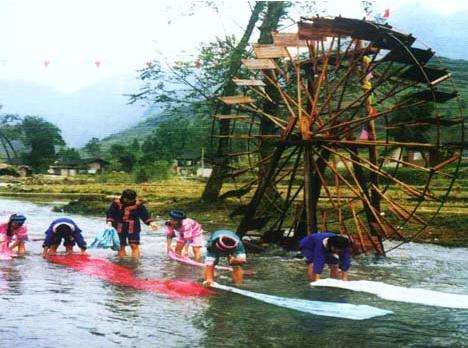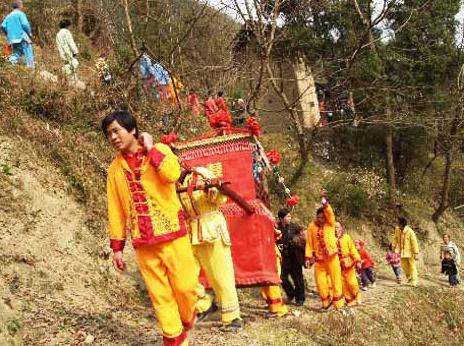
Population and Distribution:
With a population of approximately 8 million people, the Tujia are an ethnic minority found in the provinces of Hunan, Hubei, Sichuan, and Guizhou. The Tujia have a long history, dating back 2,000 years, when their ancestors first immigrated to the western parts of Hunan and Hubei.
Language and Religion:
Their language is very similar to the language used in Tibet and Burma. Because it has no written form, many Tujia people use Chinese. The Tujia believe in the power of ancestors and gods, and hold sacrificial ceremonies during festivals. White tigers are highly revered and are thought to prevent evil.
Economy:
The Tujia live mainly on agriculture and fish. Industrial crops, such as tung oil and tea are the main economic drivers in the area. Tourism is also popular, driven by scenic spots such as Zhangjiajie, Mt Wuling and Mt. Wudang, which have attracted tens of thousands of people. The natural abundance of the area and its great scenery are indeed a source of pride for the Tujia.
Not surprisingly, the main staples of the Tujia are rice and corn. Wine, brewed out of glutinous rice and pickled vegetables are common culinary items. During the busy harvest, an additional breakfast is included to indicate the auspiciousness of the occasion.

The cultures of the Tujia include the Nuo drama. Derived from a god-worshipping ceremony, it combines drama, poetry, music and dance into a complicated art and is famed as a living fossil. As such, Tujia culture has caught the eye of experts from home to abroad.

Crafts and Clothes:
Traditional cloth, woven by the Tujia women includes bedspread known as Xilangkapu. They make it colorful with over one hundred patterns. People wear short coat with loose sleeves and flowery chiffons, and men's are also short. Only during grand festivals, will they wear traditional clothes and Tujia clothing for daily life is similar to that of the Han.
House:
The houses of the Tujia, known as Diaojiaolou are very functional and similar to those of the Miao. On the lower floor, there is livestock; while the girls' bedrooms are kept upstairs. This design focuses on the use of small rooms but is also well ventilated, damp-proof and clean.
Festivals:
The grandest festival is the Tujia Year which is called 'Gannian' or 'Diaonian Meeting', and celebrated one day before the lunar New Year of the Han people. On that day, people prepare for sumptuous dinners and dance together. They also celebrate the Dragon Boat Festival, Sheri (on the second day of the second lunar month) and so on.





